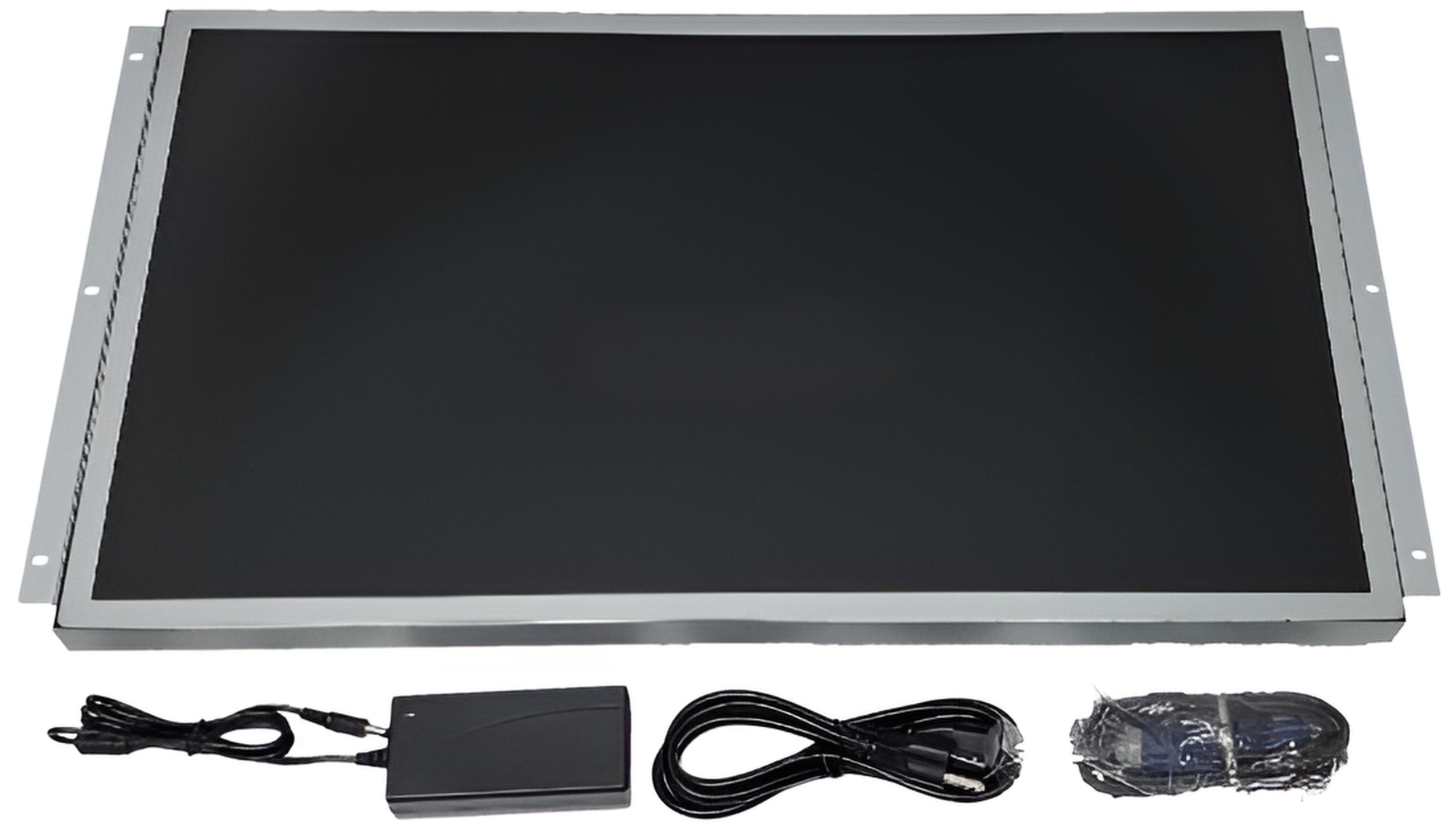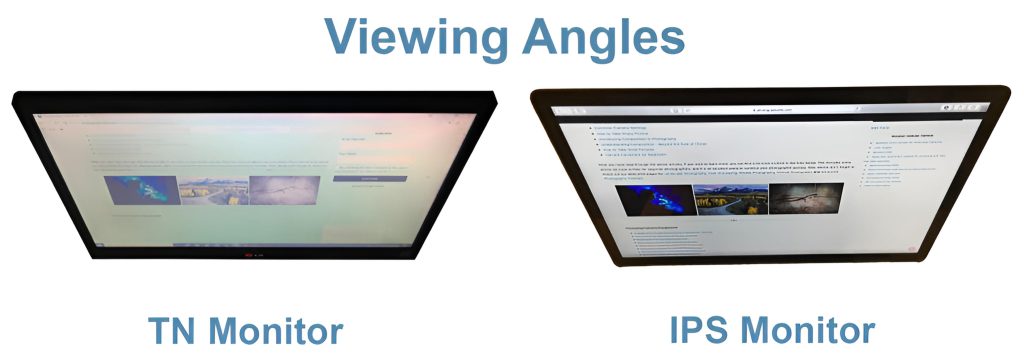
In the realm of gaming, the selection of the optimal display can wield substantial influence over the outcome, distinguishing triumph from defeat. Two eminent contenders vying for supremacy in the gaming monitor domain encompass IPS (In-Plane Switching) and LED (Light Emitting Diode) screens. Within the confines of this composition, we shall embark on an exhaustive exploration of the pivotal disparities between (IPS vs LED Monitor for Gaming) these two technological marvels, empowering you to make a judicious choice when the moment arrives to elevate your gaming escapades to a higher echelon.
Devotees of gaming understand that an exceptional graphics card in isolation fails to guarantee an immersive gaming odyssey. Your selection of a monitor wields substantial influence over how you perceive and engage with the virtual realm. In this vast array of choices, IPS and LED monitors emerge as prominent contenders. But the question lingers: which one best suits your gaming exigencies?
Table highlighting the key differences between IPS vs LED Monitor for Gaming:Deciphering IPS Monitors | IPS Monitor vs LED for GamingVariety Precision and Consistency:Wide Perspectives:Preferable Variety Generation over TN Boards:More slow Reaction Times contrasted with TN Boards:Reasonable for Proficient Work:Various IPS Ages:Goal and Size:Gaming IPS Screens:IPS (In-Plane Exchanging):Driven (Light Producing Diode):Gaming Contemplations:Reaction Time:Versatile Sync Innovation:Exploring the Domain of LED DisplaysBasic Technologies:Kinds of Driven Showcases:Benefits of Driven Showcases:Pixel Pitch and Goal:Smart LED Monitors:Challenges:Response Time and Input Lag IPS Monitor vs LED for GamingTime to respond:IPS Technology Developments:Input Slack:Gaming Contemplations:Technology for Adaptive Sync:The Mosaic of Color Precision and VivacityNavigating the Vantage Points IPS Monitor vs LED for GamingTime to respond:IPS Technology Developments:Input Slack:Gaming Contemplations:Technology for Adaptive Sync:The Axiom of Resolution IPS Monitor vs LED for GamingScreen Goal:Pixel Thickness:Detail and Picture Quality:Financial plan Contemplations:Gaming Experience:The Enigma of Adaptive Sync Technology IPS Monitor vs LED for GamingVersatile Sync Innovation Outline:Tending to Screen Tearing and Stammering:G-Sync and FreeSync Contemplations:Benefits for Gaming Experience:Specific Models to Consider:The Fiscal Paradigm IPS Monitor vs LED for GamingAuthentic Expense Patterns:Cost of IPS Monitor:Driven Screen Expenses:Goal and Extra Elements:Financial plan Cordial Choices:Pondering Power Consumption IPS Monitor vs LED for GamingPower Consumption of the IPS Monitor:Driven Screen Power Utilization:Goal and Elements Effect:Luminance Levels:Energy-Saving Elements:In general Contemplations:Special Offer this Monitor for GamingThe Edifice of Durability and LongevityMagnitude and Configuration IPS Monitor vs LED for GamingExtent - Size and Goal:Configuration - Type and Features of the Panel:Greatness and Arrangement Contemplations for Gaming:Technology for Adaptive Sync:Discerning the Monitor Suited to Your NeedsPlanned Use:Board Type:Resolution:Future-Proofing Your ConfigurationFAQs of IPS Monitor vs LED for Gaming
Table highlighting the key differences between IPS vs LED Monitor for Gaming:
 Table highlighting the key differences between IPS Monitor vs LED for Gaming. IPS Monitor vs LED for Gaming
Table highlighting the key differences between IPS Monitor vs LED for Gaming. IPS Monitor vs LED for GamingCharacteristicIPS MonitorLED MonitorDisplay TechnologyIn-Plane Switching (IPS)Light Emitting Diode (LED)Viewing AnglesExcellent; wide viewing anglesGood; may have limited anglesColor AccuracyHigh; accurate and consistentGood; can vary between modelsResponse TimeTypically higher (slower)Generally lower (faster)Contrast RatioGood, but may not match OLEDCan vary, may have high contrastPower EfficiencyConsumes more powerGenerally more energy-efficientPrice RangeOften more expensiveA wide range of price optionsPrimary Use CasesProfessional design, photo editingGeneral use, gaming, multimediaIPS Monitor vs LED for Gaming
The above table shows the special differences between IPS display monitor and LED display monitor
Deciphering IPS Monitors | IPS Monitor vs LED for Gaming
IPS monitors, an abbreviation for In-Plane Switching, carve a niche for themselves with their remarkable prowess in color replication and expansive vistas of visual access. These monitors harness a distinctive liquid crystal technology, a harbinger of steadfast color consistency. This distinction renders them the preferred choice for gamers who prize precision and exuberance.
The expression "IPS" alludes to the kind of innovation that is used in the creation of LCD (Fluid Precious stone Showcase) screens. IPS screens can be broken down by focusing on the following key issues:
Variety Precision and Consistency:
- IPS screens are known for giving precise and reliable variety propagation. They are suitable for professional graphic design, photo editing, and other color-sensitive tasks due to their wide viewing angles and lack of color shifts.
Wide Perspectives:
- One of the principal benefits of IPS innovation is its wide review points. This implies that you can see the screen from various points without a huge loss of variety precision or differentiation, which is particularly significant for cooperative work or when the screen is seen from different positions.
Preferable Variety Generation over TN Boards:
- Contrasted with TN (Bent Nematic) boards, one more typical sort of LCD innovation, IPS screens for the most part give better variety multiplication. TN panels may have faster response times, but their color accuracy and viewing angles frequently suffer.
More slow Reaction Times contrasted with TN Boards:
- While IPS boards have worked on over the long haul, they customarily have more slow reaction times contrasted with TN boards. This may be a thought for speedy gaming or applications where quick picture changes are urgent. Nonetheless, current IPS boards with higher invigorate rates have restricted this hole.
Reasonable for Proficient Work:
- For professional applications like "IPS vs LED Monitor" graphic design, video editing, and professional photography in which color consistency and accuracy are essential, IPS monitors are preferred.
Various IPS Ages:
- There are various ages of IPS innovation, with progressions in every emphasis. For instance, you could go over terms like "IPS,""IPS Expert,""Super-IPS," or "High level Super-IPS." These terms might show upgrades in viewpoints like reaction time, variety exactness, or power proficiency.
Goal and Size:
- IPS screens come in different goals (Full HD, 2K, 4K) and sizes. Consider your inclinations and necessities while picking a screen, remembering factors like work area, use, and spending plan.
Gaming IPS Screens:
- A few IPS screens are explicitly intended for gaming, offering highlights like higher invigorate rates and versatile sync innovations (like NVIDIA G-Sync or AMD FreeSync) to improve the gaming experience.
PS monitors are well-suited for professional tasks that require accurate and consistent color representation because of their wide "IPS vs LED Monitor" viewing angles and superior color reproduction. Be that as it may, clients ought to likewise consider factors like reaction time, invigorate rate, and explicit application prerequisites while picking an IPS screen.
Explaining that the expressions "IPS" and "Drove" allude to various parts of a screen, and they are not fundamentally unrelated is significant. How about we separate the correlation:
IPS (In-Plane Exchanging):
- IPS alludes to the kind of LCD (Fluid Gem Show) innovation utilized in the screen. The wide viewing angles and precise color reproduction of IPS panels make them suitable for professional content creation, photo editing, and graphic design, among other fields that require color precision.
- IPS screens for the most part have better variety exactness and consistency contrasted with other LCD board types like TN (Contorted Nematic).
Driven (Light Producing Diode):
- Driven alludes to the backdrop illumination innovation utilized in LCD screens. Driven backdrop illumination is normally utilized on the grounds that it offers better energy effectiveness and takes into consideration more slender and lighter screen plans contrasted with more established CCFL (Cold Cathode Fluorescent Light) backdrop illumination.
- Most present day screens, incorporating those with IPS boards, utilize Drove backdrop illumination. As a result, the comparison "IPS vs LED Monitor" between IPS and LED takes into account how well the panel technology (IPS) and the backlighting technology (LED) work together.
Gaming Contemplations:
- The two IPS and Drove innovations can be appropriate for gaming, however each has its own assets and shortcomings.
- IPS monitors typically have wider viewing angles and better color reproduction, both of which can enhance the gaming experience, particularly when playing visually immersive games.
- Driven backdrop illumination adds to more splendid shows and better energy productivity. Driven screens are frequently accessible with high revive rates, which can be significant for speedy gaming.
Reaction Time:
- Reaction time is a basic figure gaming screens. IPS panels have traditionally had slower response times than TN panels, which can cause motion blur in scenes that move quickly. Notwithstanding, headways in IPS innovation, for example, the presentation of "IPS gaming screens" with higher revive rates and quicker reaction times, have alleviated this issue.
Versatile Sync Innovation:
- The two IPS and Drove screens can highlight versatile sync advancements like NVIDIA G-Sync or AMD FreeSync. These innovations assist with decreasing screen tearing and faltering during gaming by synchronizing the screen's invigorate rate with the designs card's casing rate.
Exploring the Domain of LED Displays
 Deciphering IPS Monitors IPS Monitor vs LED for Gaming
Deciphering IPS Monitors IPS Monitor vs LED for GamingLED monitors employ Light Emitting Diodes to illuminate the screen. LED technology predominantly constitutes a methodology for backlighting, rather than a standalone display technology. LED monitors manifest in various display iterations, including IPS, TN (Twisted Nematic), and VA (Vertical Alignment).
Company NameModelDisplay TypeDisplay SizeSamsungQLED TV QN65Q80AQLED65 inchesLGOLED TV OLED65C1OLED65 inchesSonyBravia XR X95JLED65 inchesTCL6-Series R635LED65 inchesVizioP-Series Quantum X PX75-G1LED75 inchesIPS Monitor vs LED for Gaming
Driven shows, or Light Discharging Diode shows, address a flexible and broadly utilized innovation across different applications. Here is an investigation of the area of Driven shows:
Basic Technologies:
- LEDs are semiconductor gadgets that transmit light when an electric flow goes through them. Driven shows use a variety of these little light sources to make pictures or text.
Kinds of Driven Showcases:
- Driven TVs and Screens: Driven enlightened TVs and screens use LEDs for background brightening the LCD board. When contrasted with more seasoned CCFL (Cold Cathode Fluorescent Light) backdrop illumination, they give all the more even enlightenment, further developed splendor, and better energy effectiveness.
- Driven Video Walls: Driven modules are joined to make huge, consistent shows frequently utilized out in the open spaces, arenas, and for advanced signage. These showcases can be tweaked to fit explicit sizes and shapes.
- Driven Boards: Large LED displays are frequently used in outdoor advertising due to their brightness and visibility in a variety of lighting conditions. These bulletins can be dynamic, showing changing substance and notices.
- Events' LED Screens: Driven shows are usually utilized in occasions like shows and meetings. They offer high splendor, dynamic tones, and can be designed into various shapes and sizes.
Benefits of Driven Showcases:
- Energy Proficiency: Driven innovation is energy-productive, making Drove shows all the more harmless to the ecosystem and savvy over the long haul.
- Splendor and Perceivability: Driven shows are known for their high brilliance levels, making them appropriate for outside use and conditions with heaps of encompassing light.
- Variety Proliferation: Driven innovation considers a wide variety range, giving lively and exact tones in shows.
- Longevity: LEDs have a more extended life expectancy contrasted with conventional lighting innovations, adding to the strength of Driven shows.
- Thin Plan: LED displays can be made very thin, which helps make modern "IPS vs LED Monitor" televisions and monitors look slim.
Pixel Pitch and Goal:
- Pixel pitch alludes to the distance between individual pixels on a Drove show. More modest pixel contribute values result higher goal and better picture quality, particularly at close review distances.
https://bit.ly/48CFDjb






















